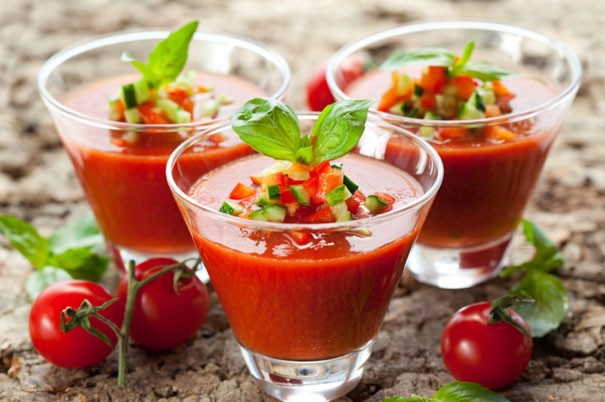Have you heard about "slow food"? It is a term first coined by the folks who promote food sustainability and the purchase of local foods. Slow food is the opposite of fast processed food. Slow food is not about eating food slower (although I like the concept of eating slower to enjoy the taste of food and often eating less amount of food). Slow food is an idea, a way of living in a world "in which all people can eat food that is good for them, good for the people who grow it, and good for the planet."
I thought about the slow food concept as I read a USA Today article reporting that Americans’ fruit and vegetable intake is still below the recommended amounts. For several years, many professional groups have recommended 2-1/2 cups of vegetables and from 1-1/2 to 2-1/2 cups of fruit per day. The amounts vary depending on calories, but making half your plate fruit and vegetables is the easiest way to increase intake. The USDA My Plate icon provides an excellent visual image.
Summer is the best time of year to increase your fruit and vegetable intake. With farmer’s markets and grocery stores’ offering sales on local produce, it is a perfect time to take the plunge into slow food. Besides fruits and vegetable, farmer’s markets offer other items raised or produced by local farmers such as meats, eggs, and cheese. By purchasing items that are on sale each week, you will accomplish two goals: eating a variety of foods within food groups and saving dollars. One of my earliest blogs discussed Saving Money with God’s Candy".
Growing vegetables is another way to enjoy slow food. I know that my garden produces an abundance of tomatoes, peppers, onions, beets, and kohlrabi. I like to dice my onions and then freeze them in half cup portions. Then throughout the winter, the onions are portioned and ready to use as ingredients in soups, chili, and stir fries. Bell peppers can be stored and used the same way as the onions.
Gazpacho (recipe below) is another easy way to use summer produce. For me, gazpacho is a cold summer soup or drink. When our son was four or five years old, he helped me prepare the soup. As we placed all the ingredients in the food processor, he said, "we are making salad juice". I like to think of it as liquid salad. At any rate, it is an easy way to use extra produce. The attached recipe for gazpacho does include some bread chunks. Their purpose is to thicken the soup.
Starting this summer, choose slow food.
GAZPACHO

Ingredients
2 cans (14.5 oz. each) no-salt-added diced tomatoes or 4 ripe tomatoes peeled and chopped
½ cucumber, halved, seeded and chopped
1 rib celery, chopped
¼ or ½ cup onion, chopped
½ green bell pepper, chopped
¼ tsp. dry minced garlic or 1 clove garlic, minced
3 Tbsp. white vinegar
2 Tbsp. olive oil
3 slices French bread, broken into pieces
1 cup water
1 cup low-sodium V-8 juice or low-sodium tomato juice
1/8 tsp. Tabasco sauce
Directions
In a large bowl, mix tomatoes, cucumber, celery, onion, green pepper, garlic, vinegar, olive oil, French bread pieces, water, V-8 or tomato juice, and Tabasco. Using a blender or food processor, purée half of the mixture and then purée the other half. Chill thoroughly (at least three hours). When serving soup, garnish with diced green pepper, cucumber, celery or tomato.
Makes 6 cups.
Nutrition
Serving size: 1 cup
Calories per serving: 132
Carbohydrate: 19 grams
Fiber: 3 grams
Fat: 5 grams
Saturated fat: 1 gram
Trans fat: 0
Protein: 4 grams
Sodium: 168 milligrams





